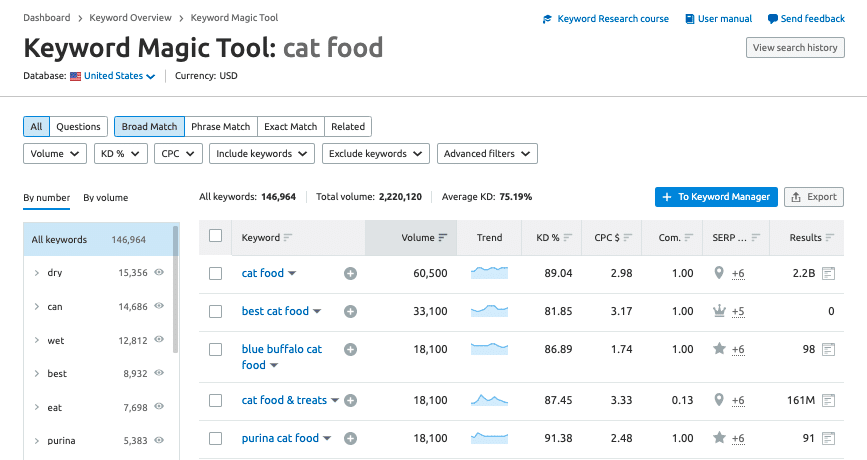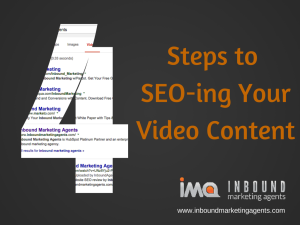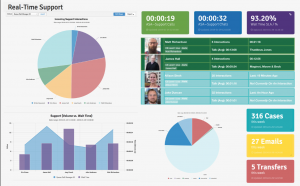
First of all, I love the word calamity. Second of all, website redesigns are all too often the cause of an SEO calamity. You know, loss of rankings, traffic, and, gulp, sales!
One of the most common website redesign mistakes is to leave SEO out of the process until the last minute. You spend tons of time and money only to get to launch and someone says “what about SEO?”

SEO is a consideration that should be part of your earliest website redesign conversations. The first question, “do we need a complete redesign?”
A Completely New Website Or Just Some Improvements?
Before you sink tons of money and time into a complete overhaul of your website, ask yourself if it’s completely necessary. Why do you think you need a completely new website?
Sometimes you do, for example:
- Your website is built on outdated technology that cannot be updated
- You’ve overhauled your brand and need a completely new look
- You’ve outgrown your current platform, i.e. Wix or SquareSpace
- You need to merge multiple websites
If you’ve gotten to the point where your current website cannot simply be “updated,” perhaps you do need a complete overhaul. But I would argue that the need for this is rarer than most businesses and marketers think.
The beauty of CMS platforms like WordPress is that you can update the theme without completely overhauling the entire website. You can do quicker-to-implement, incremental changes to the website that still have an impact on the site quality, such as…
- Improve website speed, speed is a huge UX and SEO factor
- Improve mobile usability
- Optimize images
- Update color theme or other design/branding elements
You don’t have to reinvent the wheel just because you’ve grown tired of your current website. Make small changes and focus on improving the user experience.
But if a complete website overhaul is unavoidable, start with a conversation about UX, content, and SEO.
Every Successful Website Redesign Includes SEO
SEO is key to the success of a website redesign project, not just for the rankings, but also because SEO forces you to think beyond your wants and think about what your target audience wants and needs from you.
Elements of SEO should be woven into your overall website redesign plan. For this post, I want to focus on the most common tasks to include in your redesign project planning…
- Website SEO Audit
- Content Audit and Planning
- Technical SEO Audit and Planning
Website SEO Audit
Even if you hate your existing website, there is information in there that can inform your website redesign plans, helping you to build a better and more successful website.
Website Performance Baseline
An audit should look at the following to set a baseline to work from…
- Bounce rate – whether a person stays on your site after clicking from Google or… bounces.
- Time on site – more time on-site means your content is engaging and the site is easy to use.
- Conversions – this could be orders, inquiries, signups, the user taking action you wish them to take.
- Unique visitors – exactly as it sounds, only counting each visitor once as opposed to each time they return.
- Return visitors – this will show you how useful the site is if people choose to come back.
- Pageviews – knowing which pages are most popular helps inform information architecture and content strategy.
- Platform and browser – not as important but good to know for testing.
- Mobile versus desktop traffic – I would argue this is not as important as it used to be with mobile-first ranking, but still good to know.
- Location – will help you with your local SEO strategy. Also, if you only sell in the US and 50% of your traffic is from India, that is a problem you need to address with some national SEO efforts.
All of these things are available in Google Analytics, assuming you have this setup and it’s been collecting data for a while. Gather data from the past year and use that as your benchmark for your new website.
Advanced Website SEO Audit Tools
Here, we always recommend taking it a step further with a tool like Ahrefs or SEMRush. With these tools, you can look at…
- Domain authority – show you where your website sits competitively.
- Backlink profile – this is crucial when it comes to determining what content to keep and what 301 redirects you’ll need. More on those in a minute.
- Website audit – I know this is what we’re already talking about, but SEMRush can do a complete crawl of your existing website and get you all kinds of useful data like website health score (crucial for Google Core Web Vitals, more on this below) and show recommended SEO priorities.
Of course, these tools will give you a bunch more data, but what you really want to establish here is what is working and what isn’t. Otherwise, you are redesigning your website based on the look and feel alone, or, even worse, guesses.
Keyword and Competitive Analysis
Again, using a tool like Ahrefs or SEMRush, you can get more critical data not available in Google Analytics. These tools, unlike Google Analytics, will tell you the keywords your website is ranking for as well as the keywords your competitors are ranking for.
It can look like this…

This will be very eye-opening for some. You may be ranking for words and phrases that are not a target for you. Or maybe you rank for brand terms alone, like company or product name.
Looking at that against what your competitors are ranking for will give you a good idea of what keywords are important and which may be missing from your current content and SEO efforts.
The column above labeled “CPC” is telling you what those keywords cost in a PPC campaign. This will show you their popularity and also help you with budgeting if PPC (paid search, paid social, etc) is part of your digital marketing plan.
Content Audit and Planning
Content Audit
The backlink and keyword analysis should greatly influence your content strategy moving forward. The backlink analysis will tell you what content of yours is most linked to and popular.
This shows you what content works and what doesn’t.
It will also help you when it comes to setting up your redirects (more on this in a minute).
The keyword analysis will show you what keywords you should be writing for. If you are ranking well for words and phrases and want that to continue, then you know you’ll need more of that type of content.
If there are words and phrases missing from the keyword profile that you want to rank for, you know you’ll need a plan for developing that content. For more on content audits, I wrote this easy-to-follow guide for a simple content audit that works.
Content Planning
Once you have a feel for where you stand with your content, you’ll need to do the following…
- Create a sitemap based on keyword analysis and user needs. In other words, create a sitemap for your new website that incorporates the keywords you’d like to rank for but also will make sense and make things easy for your target audience.
- Create a list of content you will need at launch and content you will want to create in the next 3-6 months. Content is a website project killer. Make your content needs list early, make sure you have the content team to pull it off, and stick to your guns on deadlines.
Wow, only two things! But we both know that this is a lot of work. If you start your website build without at least knowing your content plan, you will run into delays and potentially additional costs.
Also, early on is a good time to start planning for developing a website with expertise, authority, and trustworthiness. Google calls this E-A-T. More on Google E-A-T here.
Technical SEO Audit and Planning
While it’s always a good idea to run a technical audit on your existing website, for this post, I am talking about a technical audit of the new website. If you’ve involved a solid SEO team early on in the process, then the audit may be no more than simple spot-checking.
If you’re already down the road of redesign and SEO is just now coming into the picture, I would highly recommend that an SEO or SEO team take a good hard look at your new website before it goes live.
Technical SEO Elements
Specifically, you want to be looking for the following:
- Schema markup. This is crucial for SEO success, without it your rankings will suffer. Schema markup is kind of a cheat sheet to help Google to return more useful results for users in the SERPs (search engine results pages). Here is a great overview of the importance of schema markup.
- Google Core Web Vitals. This is Google’s way of telling you how quickly your website loads and is usable from the SERP. You can get this data using one of the dashboards mentioned above or Google’s Search Console. Here’s a great overview of Google’s Core Web Vitals. You will also want to make sure that you host your website on a business class server that is fast.
- Page experience. Core Web Vitals is part of the website’s overall “page experience.” It also factors in mobile-friendliness, safe browsing (no malware, etc.), site security (HTTPS), and intrusive interstitials (Google hates intrusive ads and pop-ups).
- Meta tags. Make sure your new website has the appropriate page title tags, uses the right kind of heading tags, and includes other meta tags like alt attributes, link attributes, etc. More on SEO meta tags from Ahrefs.
- XML sitemap. Make sure you have included a functional XML sitemap. This makes it easier for Google to crawl your content. Here’s a good post on why XML sitemaps are important.
- 301 redirects. You will implement these when you launch the website, so take the time to review them and make sure that you have redirects from all old content to their counterpart on your new website. Sometimes you can get away with using a plugin to handle this, but the smarter approach is to review all old links and assign redirects for all pages you wish to not get lost. Not implementing 301 redirects will basically mean that every old link will produce a 404 error and you do not what this! Here is a great guide on 301 redirects.
So, Is SEO Crucial Right from The Start?
I hope you agree that leaving SEO out of your website planning is going to result in a bad time.

There is a lot of work that needs to happen before a designer even thinks about your new layout.
I’m not saying design is not important, but I am arguing, very strongly, that SEO should be part of the process, from start to finish, and beyond. I’ve seen the consequences of not heeding this warning, and they are often very dire.
Am I being an alarmist? Perhaps. But wouldn’t you rather be safe than sorry? Do you really want to be the one responsible for losing ranking, leads, and money?
Don’t fret, there are many excellent SEO firms out there who can help you through this.
Digital & Social Articles on Business 2 Community
(46)
Report Post







